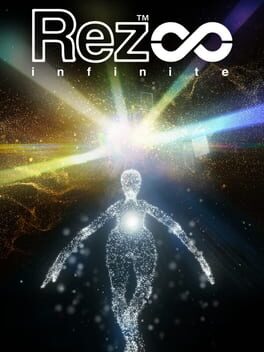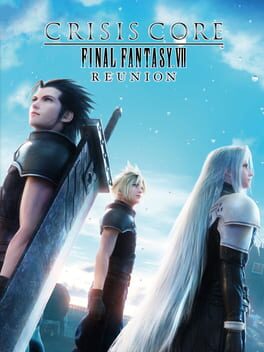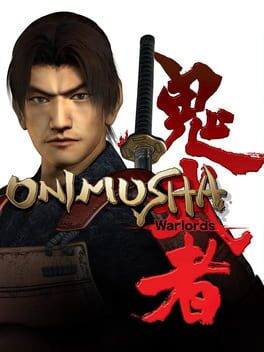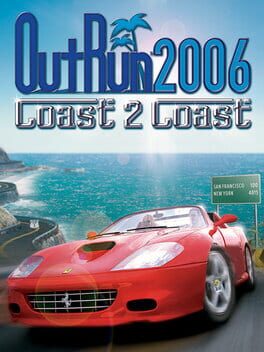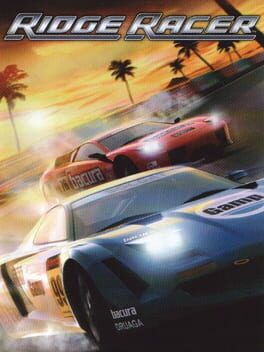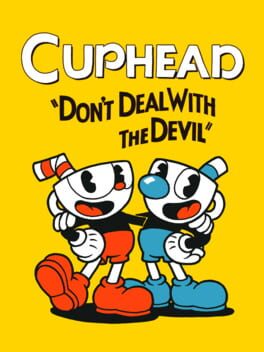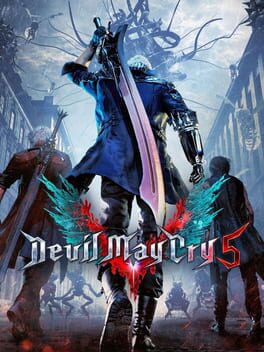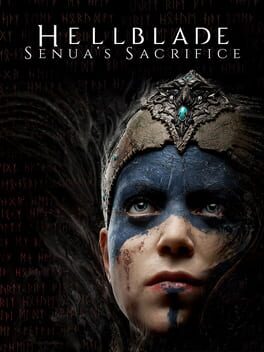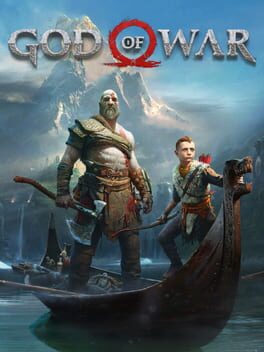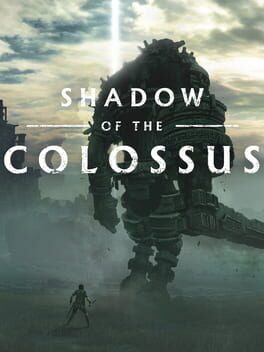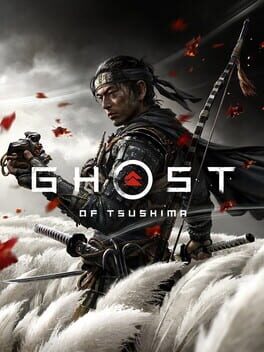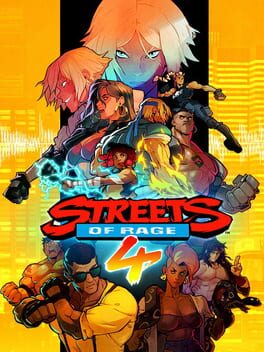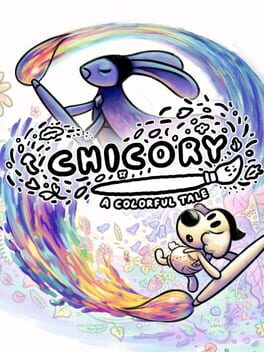Sakoda
2016
Rez features an AI, Eden, who was created to fix civilization. However, instead of taking over and becoming a despotic God, it became overwhelmed and sheltered itself from the many paradoxes of humanity. The player's job is to save Eden and help it learn to accept its role for humanity. Rarely is the technology in a piece of sci-fi media benevolent, let alone mentally vulnerable. What makes this setup so intriguing is that the power still remains with the humans (or whatever is remaining of them). Humanity has a long history of pushing its problems onto whatever lowest common denominator is easiest to exploit. In Rez's world, it must have gotten so bad that it became easier to develop a supercomputer that can pretend to be a human than to face their problems. But emulating humanity means emulating its flaws.
The cyberspace traveled crashes architectural influences from all time and space together to create a fitting depiction of what the sum total of human history would look like if crammed into a single program. Likewise, the enemy types are similarly influenced by the actual look of human viruses and bacteria, adding a further level of humanity to the sickness Eden feels. The wireframe geometry evokes comparisons to works like 1982's Tron. The primitive recreation of familiar images give the player an insight into how Eden perceives the world. Furthermore, the player model evolves from a non-descript orb with few polygons into a smoothed out, humanoid seated in the Lotus position, showing that this story is not just about the rebirth of Eden, but of the evolution and transcendence of man.
Most discussion about Rez is fittingly about the game's use of quantized sound and synesthesia. Rez is undoubtedly an experience first and a game second, but this also contributes to the faceless protagonist's progression in relation to the player. The game is beautiful, but it took the duration of the first level for me to become in sync with with the audio-visual presentation. Though, when I achieved that state, I became in tune with how the music, visuals, and gameplay respond to each other, blurring sensory lines.
Overall, Rez is about ascension; ascending from fear, from life, and ascending from extinction. Director Tetsuya Mizuguchi raised himself to the status of auteur with his examination on technological and biological evolution through the lens of artificial intelligence. Eden breaks down when it is overwhelmed with information and the only way for it to ascend along with the player is when they are both in sensory synchronicity with each other, with the world and with the fate of all life.
The cyberspace traveled crashes architectural influences from all time and space together to create a fitting depiction of what the sum total of human history would look like if crammed into a single program. Likewise, the enemy types are similarly influenced by the actual look of human viruses and bacteria, adding a further level of humanity to the sickness Eden feels. The wireframe geometry evokes comparisons to works like 1982's Tron. The primitive recreation of familiar images give the player an insight into how Eden perceives the world. Furthermore, the player model evolves from a non-descript orb with few polygons into a smoothed out, humanoid seated in the Lotus position, showing that this story is not just about the rebirth of Eden, but of the evolution and transcendence of man.
Most discussion about Rez is fittingly about the game's use of quantized sound and synesthesia. Rez is undoubtedly an experience first and a game second, but this also contributes to the faceless protagonist's progression in relation to the player. The game is beautiful, but it took the duration of the first level for me to become in sync with with the audio-visual presentation. Though, when I achieved that state, I became in tune with how the music, visuals, and gameplay respond to each other, blurring sensory lines.
Overall, Rez is about ascension; ascending from fear, from life, and ascending from extinction. Director Tetsuya Mizuguchi raised himself to the status of auteur with his examination on technological and biological evolution through the lens of artificial intelligence. Eden breaks down when it is overwhelmed with information and the only way for it to ascend along with the player is when they are both in sensory synchronicity with each other, with the world and with the fate of all life.
Crisis Core Reunion works. It is a solid prequel that expands and sets up what is needed without contradicting or bloating existing lore. Zack is a solid protagonist who initially comes off as arrogant, but his incessant dedication to his word shows he does actually have bite. His dream "to be a hero" is, as his friends say, unattainable. But the pursuit is what keeps Zack going. Hero or not, he believes in change and it rubs off on everyone around him. He is the quintessential RPG protagonist: loyal, motivated, and kind of a blockhead. He is very easy to root for. I went in thinking that Crisis Core was going to try and justify Shinra, but as the coverups and morally objectionable campaigns add up, what was initially seen as a somewhat necessary evil is revealed to be far more sinister, culminating in the eco-fascist Shinra seen in FF7. Zack's reckoning with Shinra's evils is part of what makes him a surprisingly delightful character: he learns that his honor is not an asset to be manipulated for corporate exploits.
2001
Onimusha Warlords is the pinnacle of pre-Resident Evil 4 Capcom design. It is trite to say "RE but samurai," but the work Capcom did to rebalance their formula is incredible. Swords can be swung indefinitely, so the enemies are faster, more aggressive, and have larger movesets. The level design also enables larger scale fights despite the tank controls. The more action centric story still has goofy moments, but it remains coherent and, surprisingly enough, more genuine than some of RE games. Comparisons aside, the use of pre-rendered backgrounds is among the best since the 3D models can have more polygons and the backgrounds can be higher resolution. Knowing that component video output is pretty soft, the visuals look consistent as a whole. Onimusha is an impressive and fun iteration on existing precedent.
OutRun 2006: Coast 2 Coast has the kind of overly exuberant and sun-soaked design that makes me more than willing to put up with its kind of clunky physics and intense grind because it is so beautiful to look at. When on the highway, the next stage's background elements grow out of the ground as the sky morphs into new colors. The stage variety is vast with each stage having specific corners meant to test the driver and visual language that spans from casinos to the Milky Way. This game came out when manufacturer-specific racing games were still popular, but this officially licensed, all-Ferrari lineup puts all of those games to shame by featuring the then fresh models while also going all the way back classics like the Testarossa and even further with the 250 GTO. It captures the free-spirited dream of the Cannonball Run, a cross-country race featuring fast and stunning vistas the same way the 1986 arcade game did while modernizing it for a Y2K audience with a healthy does of Frutiger Aero. Much like how the original is an aesthetic time capsule of the 80s, Coast 2 Coast is a hydrating injection of optimism for the future. OutRun 2006 radiates glee in every part of the experience.
2004
Ridge Racer feels like it is from the future no matter when you play it. This game strikes the perfect balance of personality with cleanliness such that it is remembered as a racing game with soul, but a subdued and high tech soul. Ridge Racer shows off without making its ego its core appeal. On a gameplay level, much of the same applies: the tracks are bright and full of detail, clearly made for skillful driving, the handling is swift and goes in and out of drifts easily. Furthermore, the driving is enhanced, by of all things, custom tachometers from car to car. Some cars feature a more VFD-style display, while others feature an analog needle. It is such a significant factor in feeling out the car's personality because it shows either an adherence to the styles of tradition, an embrace of new tech, or a little bit of both. Ridge Racer's personality shows in its execution of formula, with grace and with fun.
2017
Hearing the announcer yell "knockout!" will always pump me the hell up. Cuphead's cheerful style and story serve as the perfect juxtaposition to how difficult the levels are. A little guy with a cup for a head fighting carrots, mermaids, and haunted trains all the while collecting contracts for the Devil is the perfect setup for a tough as nails platformer/bullet hell/shoot em' up. Cuphead's presentation is not superficial either: it forces the player to intuit when to stand, jump and when to scramble. Each boss requires you to use your full loadout, charms, power-ups and movement abilities to maximize the space and damage output. The lack of a life bar for the bosses keeps the player locked in with only a few warnings for the next phase and for when their power-ups are ready. In general, the information provided to the player is perfectly balanced as to give them enough to know that they are getting closer to victory and that their next attempt can be even cleaner and faster. By withholding these data until the end of the run, the player will be given something to reflect on in the downtime between deaths or after winning, thus motivating them to keep trying. The game pushes you by pulling back all of the other distractions to make your priority be to survive.
2019
Devil May Cry 5 is cool, that goes without saying. But if you want to be as cool as the Dante or Nero or Vergil you see in the cutscenes, you have to earn that shit. By the end of the game I was still terrible and my combos were sloppy, but with a system this deep and fun, I was still incredibly motivated to learn and play even though I know that I will only start to look cool around my tenth playthrough. DmC 5 is one of the few games whose soundtracks appear regularly on my workout playlist. The entire game is very loud and very metal and is paced like a monster-of-the-week battle anime. Paired with great enemy variety and you have a wildly fun, all killer no filler action game with a zero tolerance combat system that has no problems telling you are garbage at the game and praising you when you are kicking ass.
Hellblade: Senua's Sacrifice is a clinically and historically supported analysis of psychosis through the lens of a Norse epic about death and the incredible courage required to be able to look stare it in the face and not be afraid. There are many games about death, loss, acceptance and clarity, but rarely is what the hero trying to rid themselves of, is you. Senua fights with every possible intrusive thought from herself--curiosity, fear, anger, suicidal ideation--but she is also very much fighting for control of her life. The very act of inhabiting her body and as an anonymous player and having control is intrinsically tied to the condition she faces. She wants freedom from herself and from the influences of anything other than her true self.
TBD
2018
God of War is hack and slash perfection. With every axe throw, blade swing and disemboweled Dragur, the game carries the full force of its gameplay without ever easing up. Kratos throws his full force behind every attack. The iconic father-son duo, Kratos and Atreus, spend their journey navigating increasingly complex identity and family struggles involving the nature of being a Norse god and what murderous tidings that brings. The pantheon of characters make you reconsider how much you are willing to sacrifice for the you people you love the most. They push and pull each other in an epic and largely positive way that exposes the inner workings of their true selves. Each character shows such vigor in the values they stand for. Kratos and Atreus teach each other a lifetime's worth of humanity on their odyssey to the peak of the nine realms. In between the violence and grief, there is a world of unfettered beauty poisoned by the selfish desires of its inhabitants. A poignant testament to the mythic scope of the game. A quest left me forever stronger.
2018
Celeste merges brutal gameplay with one of the most thoughtful narratives about mental illness ever programmed. Never have I felt so invigorated to finish a game. Climbing Celeste mountain was a cathartic journey through Madeline's complex emotions. I would go from thinking I am a platforming god to an idiot to losing my shit over how cute the graphics are all in thirty seconds. Despite the difficulty, it is a motivating challenge that never left me burnt out.
Shadow of the Colossus left me asking a myriad of questions because the game invites you to. Its worldbuilding and minimalist storytelling offer the player a narrative that intentionally lacks direction to make the player feel like an interloper. The vague plot and largely desolate world had me wondering why it was this way. What happened to this land? What was there before? Why are the colossi here? What are the colossi? The deeply layered world of questions provide meaning to the hero's plight.
2020
Ghost of Tsushima pays homage to the dramatic and poignant cinema of Jidaigeki directors by delivering an interactive experience worthy of the powerful art of its predecessors. An astonishing work of aesthetic perfection. The gameplay is so dense and rich with high quality material that is tied to Japanese folklore, art, spiritual and military culture. There is a lot of everything, but it is intrinsically tied to the worldbuilding. So it never feels forced or bloated, it seamlessly adds to the experience. The game prides itself on its varied world, enabling unique moments of violence and tranquility.
2020
Streets of Rage 4 might be a revival of a retro franchise, but this game does not "feel" retro in nature. Fighting game inputs, semi-realistic lighting models and comic book-like characters put the atmosphere of this game on another level. Despite the modern veneer, the game still pays its respects in full to the entries that preceded it while sharpening its edge to perfection. The gameplay is the epitome of crisp; the characters, radical
Chicory: A Colorful Tale embodies the hardship artists face in becoming in tune with their creations. Abusive mentors, insurmountable expectations, and a lack of belonging all plague the artist in this expedition about the secret behind color. Chicory puts the play at the forefront of the art. The world is colored the way you want it to be, each canvas is open to the painter's content. The inhabitants of its gentle world inspire the player with thoughtful introspection into their work.
